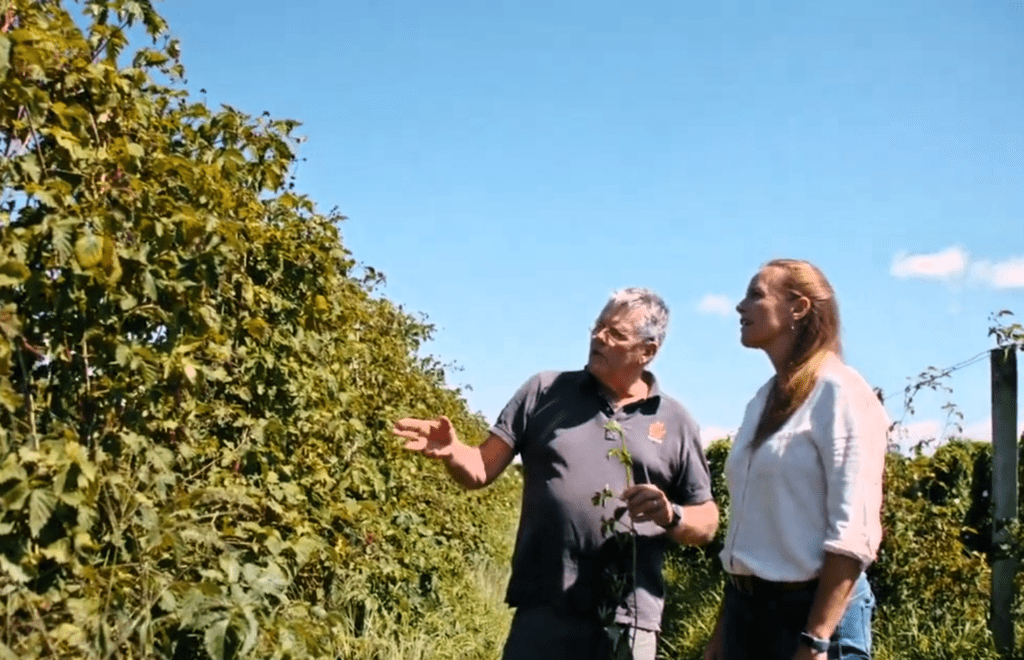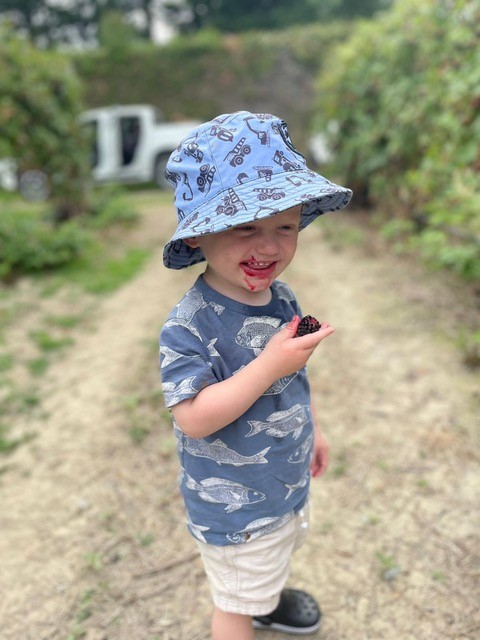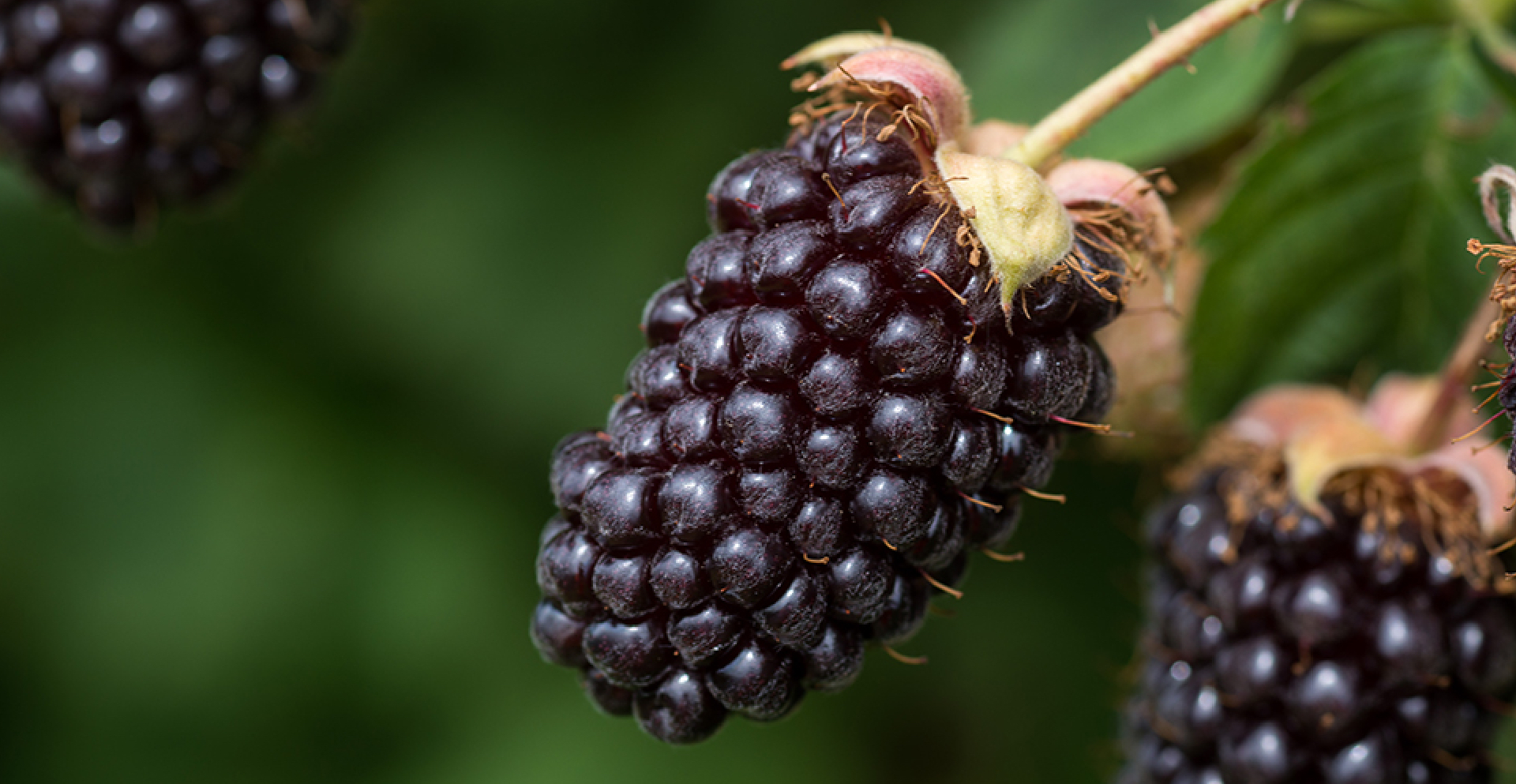For grower-owned co-operative Boysenberries New Zealand, the decision to join A Lighter Touch was driven by their values – they are innovators and see the programme in the same light.
Julian Raine, grower and managing director of Boysenberries New Zealand, says the desire to move to crop protection products that leave no residue on the fruit was another factor in signing up to the programme.
“For growers, there’s a certain amount of frustration that comes with managing the hard limits with chemical residues set by export markets. The levels we’re talking about are in parts per billion, and when you’re testing at that level you can get variable results. If we can remove that as an issue by not using products that leave a residue, that would make life much simpler.”
Boysenberries are an export crop, with a turnover of about $10 million annually. New Zealand boysenberries account for just over half of the global production of boysenberries, with Boysenberries New Zealand supplying about 55 customers in 11 countries, including the New Zealand domestic market.
Julian says their export customers are “incredibly interested” in the A Lighter Touch programme and what Boysenberries New Zealand wants to achieve through it.
 “They read everything that’s posted on the A Lighter Touch website, so they’re very knowledgeable about what we’re doing, where it’s going, and they’re avidly consuming it, because ironically it’s important for their growers (of other produce) in Europe as well.
“They read everything that’s posted on the A Lighter Touch website, so they’re very knowledgeable about what we’re doing, where it’s going, and they’re avidly consuming it, because ironically it’s important for their growers (of other produce) in Europe as well.
“Our customers understand that ‘a lighter touch’ approach to crop protection is the direction of travel for plant-based food producers globally.”
To date Boysenberries New Zealand has either trialled or discarded about 50 products, some of which are innovative, and some of which are traditional products which haven’t yet been considered to control a particular fungi or insect.
Botrytis is a key disease for boysenberry growers, but is also the fourth highest ranked crop protection gap across all A Lighter Touch product groups, so knowledge gained from work in boysenberries is of interest to other sectors.

Julian Raine and A Lighter Touch programme director Livia Esterhazy at Julian’s boysenberry orchard near Nelson.
“We did some testing of traditional products because we didn’t understand why we were seeing some holes in our spray programme. It turned out we had resistance to some products, so we’ve shared that information with other industries as well.”
The collaboration that A Lighter Touch encourages is one of the key benefits Julian sees from the programme, but he says it’s also the desire to do things differently when it comes to crop protection.
“We can achieve the right result by using different compounds that we either might not have considered, or because we’ve looked to nature to find the answers. We’re open to whatever works, however it’s derived.”
Julian considers the commercial scale of trials occurring as part of A Lighter Touch as an important element of giving growers the confidence to adopt new solutions.

The delicious taste of boysenberries makes them a popular choice for all the family, especially children – even better when grandad grows them! Pictured is Julian’s grandson Arthur.
“It’s really important because you can say, well this should work, but does it in reality? Until you actually go out there with real field trials, not tabletops in glasshouses, and not three plants, but trial a hectare and see what it does.”
Julian would like to see the A Lighter Touch programme extended two or three years beyond its existing end date of March 2027. “What we’re trying to achieve with this programme takes time, and one thing leads to another. If this didn’t work, why didn’t it work? If we do it this way, and add this in, what happens then? And it all has to be done in crop cycles, it just takes time.”
Trials can be impacted by weather and absence of pest pressure or both. “Last year because we had such a dry flowering, we didn’t get the disease pressure to get trial results. You could have sprayed water on the crop and still got the same result as expensive chemicals.”
He says it’s also important to acknowledge the risk to growers. It’s their crops that are being used to trial new solutions, and it’s their livelihood that’s impacted if a product doesn’t perform and provide the level of crop protection required.
“Growers are very aware they’re carrying all of the risk, but they’re also aware that this is the direction of travel for where you’ve got to be in the marketplace.
“There’s a saying, even if you’re on the right track, you’ll get run over if you just sit there. It’s important to keep on innovating, and sometimes you will get it wrong. You’ve just got to recognise when you get it wrong and adjust, because if you keep doing what you’re doing, you’re going to get the same result as in the past. So you’ve got to be trying things all the time.”
